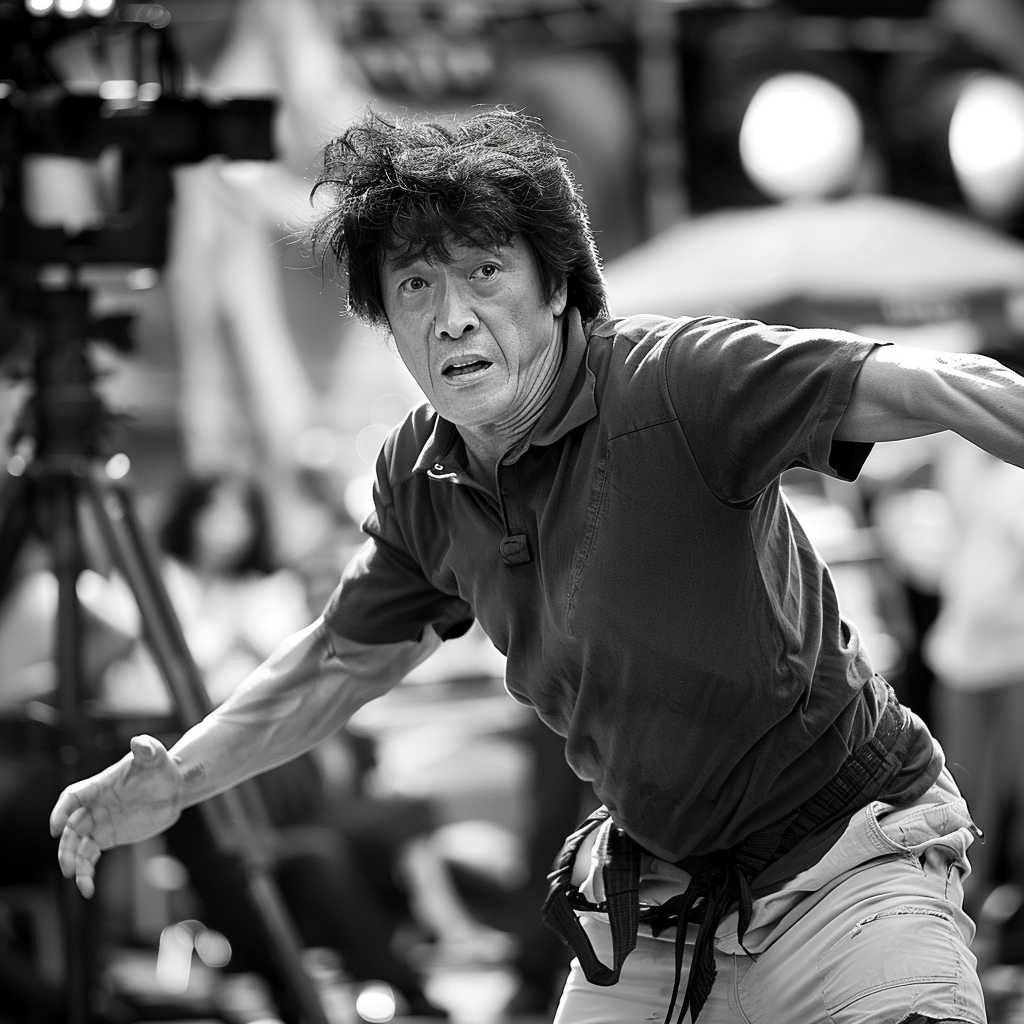###
Jackie Chan: International Martial Arts Icon and Cinematic Trailblazer
Jackie Chan is a name synonymous with high-octane martial arts, impeccable comic timing, and jaw-dropping stunts. His international fame is testament to his talent that breaches cultural and linguistic barriers. From his early beginnings in Hong Kong cinema to becoming one of the most recognizable figures in Hollywood, Jackie Chan’s journey mirrors that of someone who not only dreamt but achieved well beyond his imaginings.
Beginnings: A Star in the Making
Chan Kong-sang—better known by his stage name Jackie Chan—was born on April 7, 1954, in Hong Kong. His parents worked at the French embassy, and it was apparent early on that Jackie was ripe for the entertainment industry. Sent to the China Drama Academy at age six, he honed his skills in the disciplines of acting, singing, and martial arts under Master Yu Jim-yuen.
In his nascent career, Chan was a stuntman in films featuring Bruce Lee, making uncredited appearances in “Fist of Fury” and “Enter the Dragon.” Perhaps this set the path for him to become the blend of actor and stuntman he’s revered as today.
Rise to Fame: From Stuntman to Superstar
Jackie Chan’s first lead role came with “Little Tiger of Guangdong” in 1973, but it was not until the late 1970s that he formulated the persona that would make him an icon. The film “Snake in the Eagle’s Shadow” (1978) incorporated humor with martial arts, which became a significant aspect of his future films.
With “Drunken Master” (1978), Chan’s popularity exploded, demonstrating to audiences worldwide that martial arts films could hold a comedic edge too. In pursuit of cinematic innovation, he started performing most of his fight sequences and daredevil stunts which he’d choreographed—a practice almost unthinkable in Hollywood at that time due to the inherent risks.
International Acclaim and Filmography
With a solid fan base in Asia, Chan’s ambition led him to cross into Western cinema. While initial success was mixed, it was 1995’s “Rumble in the Bronx” that solidified his status among Western audiences. The undeniable thrill of seeing Chan leap from building to building—and dust himself off only to do it again—captured people’s imaginations.
His slate of US films, including “Rush Hour” and its sequels, “Shanghai Noon,” and “Around the World in 80 Days,” gave him a firm hold on the blockbuster territory previously dominated by action stars like Sylvester Stallone and Arnold Schwarzenegger. In these roles, not only did he acclimatize to the English language but also the Western style of movie-making.
Innovations: The Jackie Chan Stunt Team
Acknowledging the need for a team as committed to stunt work as he was, Jackie established the Jackie Chan Stunt Team which prepares because practical stunt training required a dedication that went beyond what typical extras were willing or able to provide. Today, it’s recognized as one of the premier stunt groups worldwide.
Philanthropy and Legacy
Off-camera, Chan is also well-known for his philanthropic efforts. From creating schools to aiding children with AIDS and various other causes through his charity fund—The Jackie Chan Charitable Foundation—he has used his fame for goodwill. Believing in giving back to society, particularly paying respect to his cinematic roots, he invested back into the Hong Kong movie industry during its doldrums.
Chan received an honorary Academy Award in 2016 for his lifetime achievements, cementing him within Hollywood’s hallowed halls while still holding an invaluable connection with cinephiles worldwide.
Preserving Cultural Heritage
Recognizing his cultural impact, Chan has invested personal reverence for maintaining Chinese culture through cinema. His movies usually contain elements of traditional Chinese elements or philosophies lending an educational platform while entertaining.
Business Venturing: Beyond Movies
Beyond film and philanthropy, Chan has choked out a profile as an entrepreneur with retail outlets, cafes among other ventures signifying brand ‘Jackie Chan’ stands for versatility and resilience – traits mirrored in his craft.

